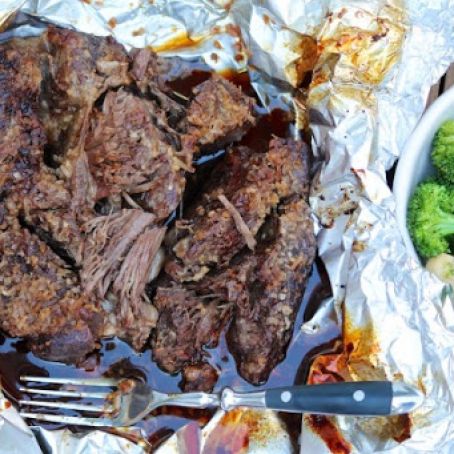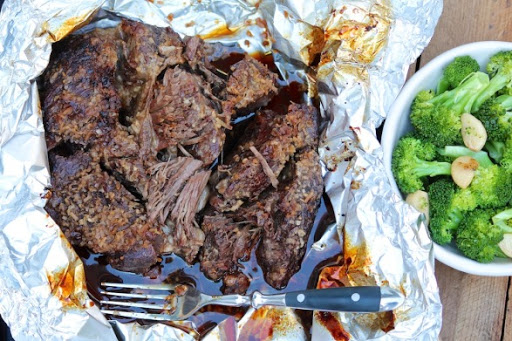Roast in Foil
By á-29897
There is no need to brown the meat first, adding to the incredible ease of this slow cooking, incredibly tender roast. Although not critical, heavy-duty foil is helpful. It’s longer than the standard roll, which makes it easier to encase the roast and prevent leaking of the delicious juices that form during the long stint in the oven.
 1 Picture
1 Picture
Ingredients
- 1 (3 to 3-1/2 pound) chuck roast (see notes*)
- Olive oil
- 1 packet Lipton onion soup mix
Details
Adapted from fountainavenuekitchen.com
Preparation
Step 1
1.Preheat the oven to 300 degrees F. Place the roast on a large sheet of aluminum foil that has been set on a baking sheet with sides. Rub a thin layer of olive oil over both sides of the roast. Sprinkle half of the soup mix packet on the top of the roast, half on the bottom. This will act as a dry rub. Bring the sides of the foil up and fold over to seal them, and then fold over the ends a few times to seal them, too. You will have a packet that should hold the juice that will cook out of the roast, but the baking sheet is essential as leaks do occur. (I do leave a bit of an air pocket at the top of the packet rather than wrapping the roast tight.)
2.Bake the roast for 3-1/2 hours or until the meat is fall-apart tender. If your roast is in the 3-1/2 to 4-pound range, cook for approximately 4 hours. Remove the tray from the oven and allow the roast to sit, in the packet, for 10 minutes (longer is fine). When opening the foil packet, be careful of the hot steam that will escape. Serve right from the foil or transfer the meat to a serving dish and pour the juices overtop. **
Notes
* Sometimes I cook two smaller (approximately 2-1/2 pound) chuck roasts, placing them in separate foil packages. In this case, I typically use about half of a second packet of soup mix to lightly coat both sides of the two roasts.
** This dish is delicious leftover and may easily be prepared in advance. Because the roast’s fat and connective tissue break down and melt away during the slow cooking process, the pan juices do become fatty. As the juices cool in the refrigerator, the fat will rise to the top and harden, at which point it can be easily scraped off the top. The remaining juices will be every bit as flavorful without the fat. For those who like gadgets, a fat separator will do the job while the liquid is warm.

Review this recipe